Italy. Vatican
Pius IX -Pope: 16 June 1846 - 7 February 1878
VIA CRUCS & COLOSSEUM
1851 Dated Bronze Medal 37mm (10.46 grams)
Reference: Bartolotti V 11
Certification: NGC VF DETAILS 5706336-011 You are bidding on the exact item pictured, provided with a Certificate of Authenticity and Lifetime Guarantee of Authenticity.
.jpg/235px-Roma06(js).jpg) The Colosseum or Coliseum, also known as the Flavian Amphitheatre or Colosseo, is an oval amphitheatre in the centre of the city of Rome, Italy. Built of concrete and sand, it is the largest amphitheatre ever built and is considered one of the greatest works of architecture and engineering ever. The Colosseum or Coliseum, also known as the Flavian Amphitheatre or Colosseo, is an oval amphitheatre in the centre of the city of Rome, Italy. Built of concrete and sand, it is the largest amphitheatre ever built and is considered one of the greatest works of architecture and engineering ever.
The Colosseum is situated just east of the Roman Forum. Construction began under the emperor Vespasian in 72, and was completed in 80 under his successor and heir Titus. Further modifications were made during the reign of Domitian (81-96). These three emperors are known as the Flavian dynasty, and the amphitheatre was named in Latin for its association with their family name (Flavius). The Colosseum could hold, it is estimated, between 50,000 and 80,000 spectators, having an average audience of some 65,000; it was used for gladiatorial contests and public spectacles such as mock sea battles, animal hunts, executions, re-enactments of famous battles, and dramas based on Classical mythology. The building ceased to be used for entertainment in the early medieval era. It was later reused for such purposes as housing, workshops, quarters for a religious order, a fortress, a quarry, and a Christian shrine. Although partially ruined because of damage caused by earthquakes and stone-robbers, the Colosseum is still an iconic symbol of Imperial Rome. It is one of Rome's most popular tourist attractions and has also links to the Roman Catholic Church, as each Good Friday the Pope leads a torchlit "Way of the Cross" procession that starts in the area around the Colosseum. The Colosseum is also depicted on the Italian version of the five-cent euro coin. The Colosseum's original Latin name was Amphitheatrum Flavium, often anglicized as Flavian Amphitheater. The building was constructed by emperors of the Flavian dynasty, following the reign of Nero. This name is still used in modern English, but generally the structure is better known as the Colosseum. In antiquity, Romans may have referred to the Colosseum by the unofficial name Amphitheatrum Caesareum (with Caesareum an adjective pertaining to the title Caesar), but this name may have been strictly poetic as it was not exclusive to the Colosseum; Vespasian and Titus, builders of the Colosseum, also constructed an amphitheater of the same name in Puteoli (modern Pozzuoli). The name Colosseum has long been believed to be derived from a colossal statue of Nero nearby (the statue of Nero was named after the Colossus of Rhodes). This statue was later remodeled by Nero's successors into the likeness of Helios (Sol) or Apollo, the sun god, by adding the appropriate solar crown. Nero's head was also replaced several times with the heads of succeeding emperors. Despite its pagan links, the statue remained standing well into the medieval era and was credited with magical powers. It came to be seen as an iconic symbol of the permanence of Rome. In the 8th century, a famous epigram attributed to the Venerable Bede celebrated the symbolic significance of the statue in a prophecy that is variously quoted: Quamdiu stat Colisæus, stat et Roma; quando cadet colisæus, cadet et Roma; quando cadet Roma, cadet et mundus ("as long as the Colossus stands, so shall Rome; when the Colossus falls, Rome shall fall; when Rome falls, so falls the world"). This is often mistranslated to refer to the Colosseum rather than the Colossus (as in, for instance, Byron's poem Childe Harold's Pilgrimage). However, at the time that the Pseudo-Bede wrote, the masculine noun coliseus was applied to the statue rather than to what was still known as the Flavian amphitheatre. The Colossus did eventually fall, possibly being pulled down to reuse its bronze. By the year 1000 the name "Colosseum" had been coined to refer to the amphitheatre. The statue itself was largely forgotten and only its base survives, situated between the Colosseum and the nearby Temple of Venus and Roma. The name further evolved to Coliseum during the Middle Ages. In Italy, the amphitheatre is still known as il Colosseo, and other Romance languages have come to use similar forms such as Coloseumul (Romanian), le Colisée (French), el Coliseo (Spanish) and o Coliseu (Portuguese).
 Pope Pius IX (Italian: Pio; 13 May 1792 - 7 February 1878), born Giovanni Maria Mastai-Ferretti, was head of the Catholic Church from 16 June 1846 to his death on 7 February 1878. He was the longest-reigning elected pope in the history of the Catholic Church, serving for over 31 years. During his pontificate, Pius IX convened the First Vatican Council (1869-70), which decreed papal infallibility, but the council was cut short owing to the loss of the Papal States. Pope Pius IX (Italian: Pio; 13 May 1792 - 7 February 1878), born Giovanni Maria Mastai-Ferretti, was head of the Catholic Church from 16 June 1846 to his death on 7 February 1878. He was the longest-reigning elected pope in the history of the Catholic Church, serving for over 31 years. During his pontificate, Pius IX convened the First Vatican Council (1869-70), which decreed papal infallibility, but the council was cut short owing to the loss of the Papal States.
Europe, including the Italian peninsula, was in the midst of considerable political ferment when the bishop of Imola, Cardinal Giovanni Maria Mastai-Ferretti, was elected pope. He took the name Pius, after his generous patron and the long-suffering prisoner of Napoleon, Pius VII. He had been elected by the faction of cardinals sympathetic to the political liberalization coursing across Europe, and his initial governance of the Papal States gives evidence of his own moderate sympathies; under his direction various sorts of political prisoners in the Papal States were released. A series of terrorist acts sponsored by Italian liberals and nationalists, which included the assassination of (among others) his Minister of the Interior, Pellegrino Rossi, and which forced Pius himself to briefly flee Rome in 1848, along with widespread revolutions in Europe, led to his growing skepticism towards the liberal, nationalist agenda. Through the 1850s and 1860s, Italian nationalists made military gains against the Papal States, which culminated in the seizure of the city of Rome in 1870 and the dissolution of the Papal States. Thereafter, Pius IX refused to accept the Law of Guarantees from the Italian government, which would have made the Holy See dependent on legislation that the Italian parliament could modify at any time. Pius refused to leave Vatican City, and was thereafter referred to (chiefly by himself) as the "Prisoner of the Vatican". His ecclesiastical policies towards other countries, such as Russia, Germany or France, were not always successful, owing in part to changing secular institutions and internal developments within these countries. However, concordats were concluded with numerous states, such as Austria-Hungary, Portugal, Spain, Canada, Tuscany, Ecuador, Venezuela, Honduras, El Salvador, and Haiti. Pius was a Marian pope, who in his encyclical Ubi primum emphasized Mary's role in salvation. In 1854, he promulgated the dogma of the Immaculate Conception, articulating a long-held Catholic belief that Mary, the Mother of God, was conceived without original sin. He conferred the title Our Mother of Perpetual Help on a famous Byzantine icon from Crete entrusted to the Redemptorists. In 1862, he convened 300 bishops to the Vatican for the canonization of Twenty-six Martyrs of Japan. His 1864 Syllabus of Errors stands as a strong condemnation against liberalism, modernism, moral relativism, secularization, and separation of church and state, in effect definitively restating Catholic teaching regarding state recognition of the Catholic faith as the state religion as imperative in nations where the majority of the population is Catholic. However, his most important legacy is the First Vatican Council, which convened in 1869, which defined the dogma of papal infallibility, but was interrupted as Italian nationalist troops threatened Rome. The council is considered to have contributed to a centralization of the church in the Vatican, while also clearly defining the Pope's doctrinal authority. Many contemporary ecclesiastical historians and journalists question his approaches. His appeal for public worldwide support of the Holy See after he became "the prisoner of the Vatican" resulted in the revival and spread to the whole Catholic Church of Peter's Pence, which is used today to enable the Pope "to respond to those who are suffering as a result of war, oppression, natural disaster, and disease".[5] After his death in 1878, his canonization process was opened on 11 February 1907 by Pope Pius X, and it drew considerable controversy over the years. It was closed on several occasions during the pontificates of Pope Benedict XV and Pope Pius XI. Pope Pius XII re-opened the cause on 7 December 1954, and Pope John Paul II proclaimed him Venerable on 6 July 1985. He was beatified on 3 September 2000 after the recognition of a miracle. Pius IX was assigned the liturgical feast day of 7 February, the date of his death.
 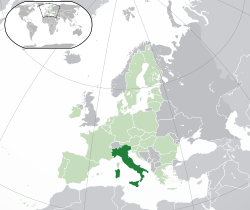 Italy, officially the Italian Republic (Italian: Repubblica Italiana), is a unitary parliamentary republic in Europe. Italy covers an area of 301,338 km2 (116,347 sq mi) and has a largely temperate climate; due to its shape, it is often referred to in Italy as lo Stivale (the Boot). With 61 million inhabitants, it is the 4th most populous EU member state. Located in the heart of the Mediterranean Sea, Italy shares open land borders with France, Switzerland, Austria, Slovenia, San Marino and Vatican City. Italy, officially the Italian Republic (Italian: Repubblica Italiana), is a unitary parliamentary republic in Europe. Italy covers an area of 301,338 km2 (116,347 sq mi) and has a largely temperate climate; due to its shape, it is often referred to in Italy as lo Stivale (the Boot). With 61 million inhabitants, it is the 4th most populous EU member state. Located in the heart of the Mediterranean Sea, Italy shares open land borders with France, Switzerland, Austria, Slovenia, San Marino and Vatican City.
 Since ancient times, Greek, Etruscan, Celtic, and other cultures have thrived on the Italian Peninsula. Rome ultimately emerged as the dominant power, conquering much of the ancient world and becoming the leading cultural, political, and religious centre of Western civilisation. During the Dark Ages, the region suffered sociopolitical collapse amid calamitous barbarian invasions, but by the 11th century, numerous Italian city-states rose to great prosperity through shipping, commerce and banking, and even laid the groundwork for capitalism. The Renaissance led to a flourishing of Italian culture, producing famous scholars, artists, and polymaths such as Leonardo da Vinci, Galileo, Michelangelo and Machiavelli. Italian explorers such as Marco Polo, Christopher Columbus, Amerigo Vespucci, and Giovanni da Verrazzano discovered new routes to the Far East and the New World, helping to usher in the European Age of Discovery. Nevertheless, Italy remained politically fragmented and fell prey to European powers such as France, Spain, and later Austria, subsequently entering a long period of decline that lasted until the mid-19th century. Since ancient times, Greek, Etruscan, Celtic, and other cultures have thrived on the Italian Peninsula. Rome ultimately emerged as the dominant power, conquering much of the ancient world and becoming the leading cultural, political, and religious centre of Western civilisation. During the Dark Ages, the region suffered sociopolitical collapse amid calamitous barbarian invasions, but by the 11th century, numerous Italian city-states rose to great prosperity through shipping, commerce and banking, and even laid the groundwork for capitalism. The Renaissance led to a flourishing of Italian culture, producing famous scholars, artists, and polymaths such as Leonardo da Vinci, Galileo, Michelangelo and Machiavelli. Italian explorers such as Marco Polo, Christopher Columbus, Amerigo Vespucci, and Giovanni da Verrazzano discovered new routes to the Far East and the New World, helping to usher in the European Age of Discovery. Nevertheless, Italy remained politically fragmented and fell prey to European powers such as France, Spain, and later Austria, subsequently entering a long period of decline that lasted until the mid-19th century.
After various unsuccessful attempts, the second and the third wars for Italian independence resulted in the eventual unification of most of present-day Italy by 1866. From the late 19th century to the early 20th century, the new Kingdom of Italy rapidly industrialised and acquired a colonial empire, becoming a great power. However, southern and rural areas of the country remained largely excluded from industrialisation, fuelling a large and influential diaspora. Despite being one of the main victors in World War I, Italy entered a period of economic crisis and social turmoil, leading the way to the rise of a Fascist dictatorship in 1922. The subsequent participation in World War II on the Axis side ended in military defeat, economic destruction and civil war. In the years that followed, Italy abolished the monarchy, reinstated democracy, and enjoyed a prolonged economic boom, thus becoming one of the world's most developed nations. Italy has the third largest economy in the Eurozone and the eighth largest economy in the world. It has a very high level of human development and enjoys the highest life expectancy in the EU. Italy plays a prominent role in global military, cultural and diplomatic affairs and is also considered to be a major regional power in Europe. Italy is a founding and leading member of the European Union and the member of numerous international institutions, including the UN, NATO, the OECD, the OSCE, the WTO, the G7/G8, G20, the Union for the Mediterranean, the Council of Europe, Uniting for Consensus, and many more. As a reflection of its vast cultural wealth, Italy is home to 51 World Heritage Sites, the most in the world, and is one of the most visited countries.
|
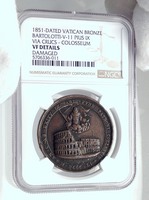
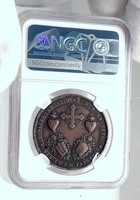
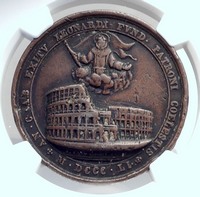
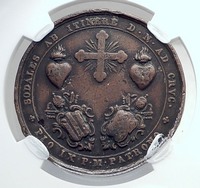
.jpg/235px-Roma06(js).jpg) The Colosseum or Coliseum, also known as the Flavian Amphitheatre or Colosseo, is an oval amphitheatre in the centre of the city of Rome, Italy. Built of concrete and sand, it is the largest amphitheatre ever built and is considered one of the greatest works of architecture and engineering ever.
The Colosseum or Coliseum, also known as the Flavian Amphitheatre or Colosseo, is an oval amphitheatre in the centre of the city of Rome, Italy. Built of concrete and sand, it is the largest amphitheatre ever built and is considered one of the greatest works of architecture and engineering ever. Pope Pius IX (Italian: Pio; 13 May 1792 - 7 February 1878), born Giovanni Maria Mastai-Ferretti, was head of the Catholic Church from 16 June 1846 to his death on 7 February 1878. He was the longest-reigning elected pope in the history of the Catholic Church, serving for over 31 years. During his pontificate, Pius IX convened the First Vatican Council (1869-70), which decreed papal infallibility, but the council was cut short owing to the loss of the Papal States.
Pope Pius IX (Italian: Pio; 13 May 1792 - 7 February 1878), born Giovanni Maria Mastai-Ferretti, was head of the Catholic Church from 16 June 1846 to his death on 7 February 1878. He was the longest-reigning elected pope in the history of the Catholic Church, serving for over 31 years. During his pontificate, Pius IX convened the First Vatican Council (1869-70), which decreed papal infallibility, but the council was cut short owing to the loss of the Papal States. 
 Italy, officially the Italian Republic (Italian: Repubblica Italiana), is a unitary parliamentary republic in Europe. Italy covers an area of 301,338 km2 (116,347 sq mi) and has a largely temperate climate; due to its shape, it is often referred to in Italy as lo Stivale (the Boot). With 61 million inhabitants, it is the 4th most populous EU member state. Located in the heart of the Mediterranean Sea, Italy shares open land borders with France, Switzerland, Austria, Slovenia, San Marino and Vatican City.
Italy, officially the Italian Republic (Italian: Repubblica Italiana), is a unitary parliamentary republic in Europe. Italy covers an area of 301,338 km2 (116,347 sq mi) and has a largely temperate climate; due to its shape, it is often referred to in Italy as lo Stivale (the Boot). With 61 million inhabitants, it is the 4th most populous EU member state. Located in the heart of the Mediterranean Sea, Italy shares open land borders with France, Switzerland, Austria, Slovenia, San Marino and Vatican City. Since ancient times, Greek, Etruscan, Celtic, and other cultures have thrived on the Italian Peninsula. Rome ultimately emerged as the dominant power, conquering much of the ancient world and becoming the leading cultural, political, and religious centre of Western civilisation. During the Dark Ages, the region suffered sociopolitical collapse amid calamitous barbarian invasions, but by the 11th century, numerous Italian city-states rose to great prosperity through shipping, commerce and banking, and even laid the groundwork for capitalism. The Renaissance led to a flourishing of Italian culture, producing famous scholars, artists, and polymaths such as Leonardo da Vinci, Galileo, Michelangelo and Machiavelli. Italian explorers such as Marco Polo, Christopher Columbus, Amerigo Vespucci, and Giovanni da Verrazzano discovered new routes to the Far East and the New World, helping to usher in the European Age of Discovery. Nevertheless, Italy remained politically fragmented and fell prey to European powers such as France, Spain, and later Austria, subsequently entering a long period of decline that lasted until the mid-19th century.
Since ancient times, Greek, Etruscan, Celtic, and other cultures have thrived on the Italian Peninsula. Rome ultimately emerged as the dominant power, conquering much of the ancient world and becoming the leading cultural, political, and religious centre of Western civilisation. During the Dark Ages, the region suffered sociopolitical collapse amid calamitous barbarian invasions, but by the 11th century, numerous Italian city-states rose to great prosperity through shipping, commerce and banking, and even laid the groundwork for capitalism. The Renaissance led to a flourishing of Italian culture, producing famous scholars, artists, and polymaths such as Leonardo da Vinci, Galileo, Michelangelo and Machiavelli. Italian explorers such as Marco Polo, Christopher Columbus, Amerigo Vespucci, and Giovanni da Verrazzano discovered new routes to the Far East and the New World, helping to usher in the European Age of Discovery. Nevertheless, Italy remained politically fragmented and fell prey to European powers such as France, Spain, and later Austria, subsequently entering a long period of decline that lasted until the mid-19th century.
